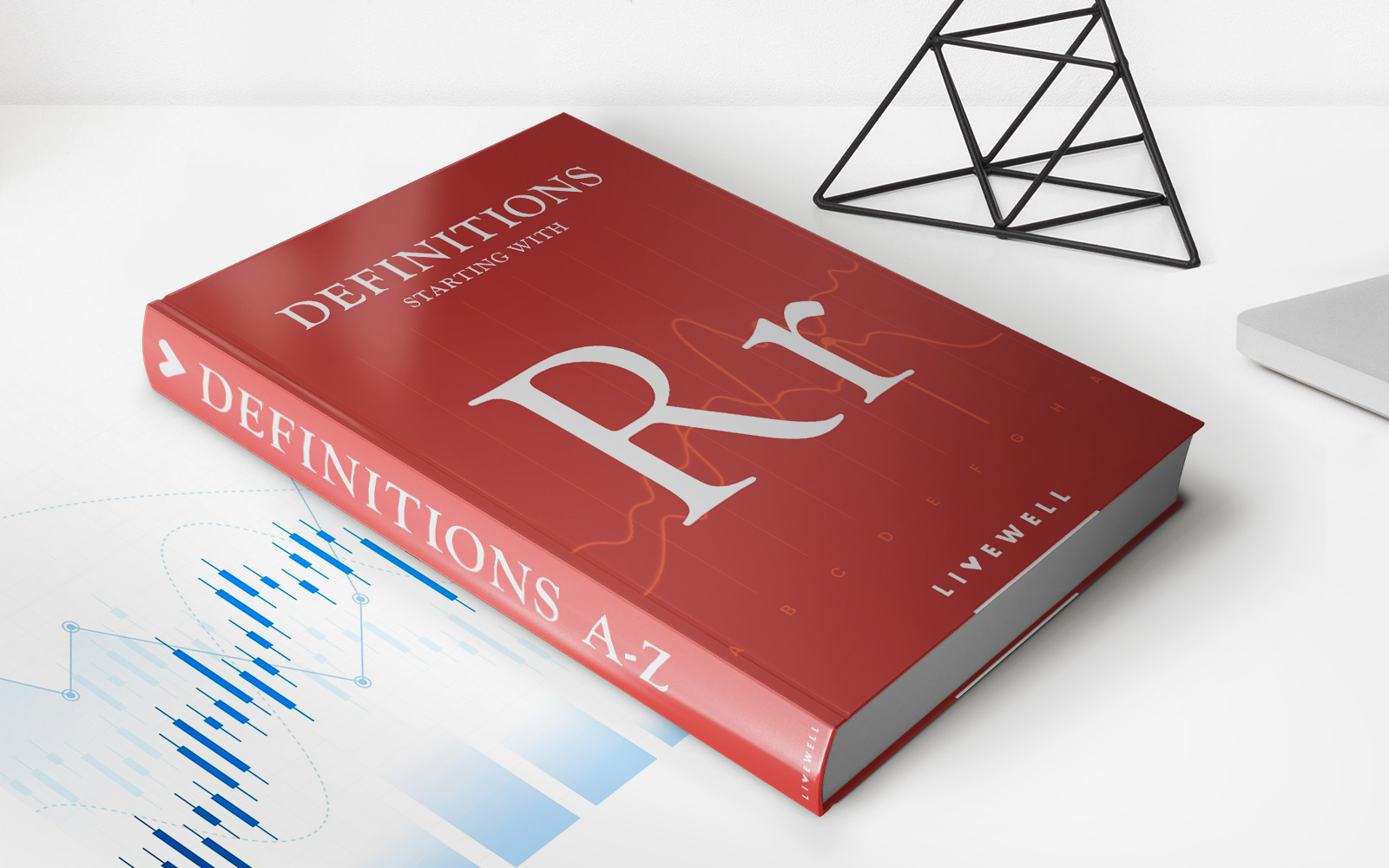

Finance
What Is A Bank Letter Of Credit
Modified: February 21, 2024
Learn more about the importance of bank letters of credit in the world of finance. Discover how they protect parties involved in international trade transactions and mitigate risks.
(Many of the links in this article redirect to a specific reviewed product. Your purchase of these products through affiliate links helps to generate commission for LiveWell, at no extra cost. Learn more)
Table of Contents
- Introduction
- Definition of a Bank Letter of Credit
- How a Bank Letter of Credit Works
- Types of Bank Letters of Credit
- Advantages and Disadvantages of Bank Letters of Credit
- The Process of Obtaining a Bank Letter of Credit
- Importance and Uses of Bank Letters of Credit
- Key Terms and Concepts Related to Bank Letters of Credit
- Conclusion
Introduction
In the world of international trade and finance, a Bank Letter of Credit plays a crucial role by providing a secure means of payment and mitigating risks for exporters and importers. This financial instrument is utilized by businesses to ensure prompt payment and establish trust between parties involved in a transaction.
A Bank Letter of Credit, commonly referred to as a “letter of credit” or “LC,” is a document issued by a financial institution, usually a bank, on behalf of a buyer (importer) to guarantee payment to a seller (exporter) for goods or services rendered. It acts as a guarantee that the payment will be made as long as the seller meets the specified terms and conditions outlined in the LC.
One of the primary purposes of a Bank Letter of Credit is to reduce the risk for both the buyer and the seller. For the buyer, it provides assurance that the seller will fulfill the terms of the agreement before payment is disbursed. On the other hand, it also protects the seller by ensuring that they will receive payment as long as they fulfill the agreed-upon obligations.
The use of Bank Letters of Credit is widely prevalent in international trade, particularly when buyers and sellers are located in different countries and face various risks and uncertainties. It provides a level of security that enhances trust and facilitates smooth transactions in an often complex and unpredictable global marketplace.
This article will delve into the intricacies of Bank Letters of Credit, discussing their definition, how they work, different types, advantages and disadvantages, the process of obtaining one, and the importance of Bank Letters of Credit in international trade. Furthermore, key terms and concepts related to LCs will be explained to provide a comprehensive understanding of this essential financial instrument.
Join us as we explore the world of Bank Letters of Credit, unraveling the mysteries behind this vital tool in the realm of international finance and trade.
Definition of a Bank Letter of Credit
A Bank Letter of Credit is a financial arrangement or document issued by a bank on behalf of a buyer/importer to guarantee payment to a seller/exporter. It serves as a contractual agreement between the buyer, seller, and the issuing bank. The letter of credit outlines the specific terms and conditions that the seller must meet in order to receive payment for the goods or services provided.
Essentially, a Bank Letter of Credit acts as a guarantee of payment, providing reassurance to both the buyer and the seller in a transaction. It ensures that the seller will receive payment as long as they comply with the terms and conditions set forth in the letter of credit.
The Bank Letter of Credit is typically initiated by the buyer/importer, who applies to their bank for the issuance of the letter. The issuing bank then evaluates the creditworthiness of the buyer and agrees to back the letter of credit. Once approved, the buyer’s bank, known as the issuing bank, issues the letter to the seller’s bank, also known as the advising or confirming bank. The seller can then rely on the letter of credit to receive payment for the goods or services provided.
It’s important to note that a Bank Letter of Credit is a separate agreement from the contract between the buyer and the seller. It is a financial arrangement that provides an added layer of security for both parties. If the seller fulfills the obligations specified in the letter of credit, they are entitled to receive payment from the issuing bank, even if there are disputes or issues with the underlying contract.
Overall, a Bank Letter of Credit serves as a vital tool in international trade, ensuring payment security and mitigating risks associated with cross-border transactions. It provides peace of mind to both buyers and sellers, allowing them to engage in trade with reduced uncertainty and greater confidence.
How a Bank Letter of Credit Works
A Bank Letter of Credit operates through a well-defined process that involves the buyer, the seller, and the banks. It provides a secure mechanism for international trade transactions by ensuring that payment is made to the seller once they meet the specified terms and conditions. Here is a step-by-step overview of how a Bank Letter of Credit works:
- Application: The buyer, also known as the applicant, submits an application to their bank, the issuing bank, requesting the issuance of a letter of credit. The application includes details such as the amount, the beneficiary (seller), and the terms and conditions to be met.
- Issuance: The issuing bank reviews the application and, if satisfied with the buyer’s creditworthiness, issues the letter of credit in favor of the seller. The letter of credit contains all the necessary information, such as the amount, expiry date, shipping terms, and any specific documents required for payment.
- Confirmation (optional): If the seller requires additional assurance, the advising bank, or another bank, may confirm the letter of credit. This means that they add their guarantee to pay the seller in case the issuing bank fails to do so. Confirming banks charge fees for this service.
- Shipment and Documents: The seller ships the goods or provides the agreed-upon services to the buyer as per the terms of the contract. They also prepare the necessary documents, such as commercial invoices, packing lists, and bills of lading, as specified in the letter of credit.
- Presentation of Documents: The seller submits the required documents to the advising bank or the confirming bank, depending on the arrangement. The bank verifies that the documents comply with the terms of the letter of credit.
- Payment: If the documents are in order, the bank makes payment to the seller as stipulated in the letter of credit. The bank then forwards the documents to the issuing bank, which, in turn, delivers them to the buyer.
- Acceptance or Rejection: The buyer examines the documents received and verifies their compliance with the terms of the letter of credit and the underlying contract. If the documents are in order, the buyer accepts them and takes possession of the goods or approves the services.
- Reimbursement: The issuing bank reimburses the confirming or advising bank for the payment made to the seller. The buyer is then responsible for repaying the issuing bank according to the agreed upon terms.
The Bank Letter of Credit process ensures a secure and reliable method of payment for international trade transactions. It provides protection for both the buyer and the seller, minimizing the risks associated with cross-border trade and promoting trust and confidence between parties.
Types of Bank Letters of Credit
Bank Letters of Credit come in various types, each designed to suit different requirements and circumstances. The specific type of letter of credit chosen depends on factors such as the nature of the transaction, the level of trust between the buyer and the seller, and the level of risk involved. Here are some common types of Bank Letters of Credit:
- Revocable Letter of Credit: This type of letter of credit can be altered or canceled by the issuing bank without notification to the beneficiary (seller). However, revocable letters of credit are rarely used in international trade transactions due to the lack of assurance it provides to the seller.
- Irrevocable Letter of Credit: An irrevocable letter of credit cannot be changed or canceled without the agreement of all parties involved. It provides assurance to the seller that the issuing bank’s commitment to pay is firm and cannot be revoked unilaterally. Irrevocable letters of credit are the most commonly used type in international trade.
- Confirmed Letter of Credit: In some cases, when the buyer and seller are located in different countries with a high level of risk, the seller may request a confirmed letter of credit. A confirmed letter of credit involves an additional bank, known as the confirming bank, adding its guarantee of payment to the seller. This provides an extra layer of security, especially when dealing with unfamiliar or high-risk markets.
- Transferable Letter of Credit: A transferable letter of credit allows the beneficiary (seller) to transfer all or part of the credit to another party. This is beneficial when intermediaries or multiple suppliers are involved in a transaction. It provides flexibility and enables the seller to fulfill their obligations by engaging other parties.
- Standby Letter of Credit: Unlike other types of letters of credit that are primarily used for payment guarantee, a standby letter of credit functions more as a performance bond or a financial safety net. It serves as a guarantee of payment or performance in case the buyer fails to fulfill their obligations. Standby letters of credit are often used in construction and real estate projects, as well as in legal proceedings.
It’s important to carefully consider the specific type of Bank Letter of Credit required for each trade transaction, taking into account the level of trust, risk, and complexity involved. Consulting with financial experts or trade professionals can help determine the most suitable type of letter of credit for a particular transaction.
Advantages and Disadvantages of Bank Letters of Credit
Bank Letters of Credit offer several advantages and disadvantages for both buyers and sellers in international trade. Understanding these pros and cons is crucial for making informed decisions when utilizing this financial instrument. Here are some of the advantages and disadvantages of Bank Letters of Credit:
Advantages:
- Payment Security: The primary advantage of a Bank Letter of Credit is the assurance of payment to the seller. It provides a level of protection against non-payment or default by the buyer, reducing the risk of financial loss.
- Global Acceptance: Bank Letters of Credit are widely accepted in international trade. Sellers across different countries and regions are often more willing to engage in transactions when a letter of credit is provided, as it offers a standardized and secure method of payment.
- Risk Mitigation: Bank Letters of Credit help mitigate various risks associated with cross-border transactions. It reduces risks related to non-payment, political instability, foreign exchange fluctuations, and non-performance by the parties involved.
- Flexibility: Bank Letters of Credit can be tailored to specific transaction requirements, such as payment terms, shipping conditions, and required documents. This flexibility allows buyers and sellers to negotiate terms that meet their specific needs.
- Access to Financing: Bank Letters of Credit can provide access to financing options for both buyers and sellers. Buyers may be able to secure trade financing from their bank based on the letter of credit, while sellers can use the letter of credit as collateral to obtain financing.
Disadvantages:
- Cost: Bank Letters of Credit involve fees and charges, including issuance fees, confirmation fees (if applicable), document examination fees, and amendment fees. These costs can add up and impact the overall transaction expenses.
- Complexity: The process of obtaining and managing Bank Letters of Credit can be complex and time-consuming. Parties involved must ensure strict compliance with the terms and conditions specified in the letter, as any discrepancies in documents can lead to delays in payment or even non-payment.
- Potential Disputes: Disputes may arise between the buyer, seller, and banks regarding the interpretation of the terms and conditions outlined in the letter of credit. Resolving such disputes can be time-consuming and may require legal assistance.
- Risk of Fraud: Bank Letters of Credit can be vulnerable to fraud if parties involved do not exercise due diligence. Fraudulent documents, misrepresentation, or collusion can lead to financial losses for either the buyer or the seller.
- Restrictions and Limitations: Bank Letters of Credit may impose certain restrictions and limitations on the buyer and seller. These can include specific shipping or delivery requirements, time constraints for document presentation, or limitations on modifications to the letter of credit.
Overall, while Bank Letters of Credit offer significant advantages in terms of payment security and risk mitigation, it is important to weigh these advantages against the associated costs, complexities, and potential risks involved. Careful consideration of the specific needs and circumstances of each trade transaction is essential to maximize the benefits of utilizing Bank Letters of Credit.
The Process of Obtaining a Bank Letter of Credit
Obtaining a Bank Letter of Credit involves several stages and requires cooperation between the buyer, the seller, and the banks involved. The process can be complex, but understanding the key steps involved is essential. Here is a simplified overview of the process of obtaining a Bank Letter of Credit:
- Negotiation: The buyer and the seller negotiate the terms and conditions of the trade transaction, including the price, quantity, delivery terms, and payment terms. Once both parties agree, they move forward with the letter of credit process.
- Application: The buyer, also known as the applicant, submits an application to their bank, the issuing bank, requesting the issuance of a letter of credit. The application includes details such as the amount, the beneficiary (seller), and the terms and conditions to be met.
- Issuance: The issuing bank reviews the buyer’s creditworthiness and evaluates the request. If approved, the bank issues the letter of credit based on the agreed-upon terms and conditions. The letter of credit serves as a payment guarantee for the seller.
- Advising: The issuing bank sends the letter of credit to the advising bank, also referred to as the seller’s bank. The advising bank acts as an intermediary and advises the seller of the existence and terms of the letter of credit.
- Confirmation (optional): If the seller requires additional assurance, the advising bank or another bank may confirm the letter of credit. This means that they add their guarantee to pay the seller in case the issuing bank fails to do so. Confirming banks charge fees for this service.
- Shipment and Documents: The seller prepares and ships the goods or provides the agreed-upon services within the specified time frame. They also ensure that all required documents, such as commercial invoices, packing lists, and bills of lading, are prepared in accordance with the terms of the letter of credit.
- Presentation of Documents: Once the seller has completed the shipment and prepared the necessary documents, they present these documents to the advising or confirming bank. The bank verifies that the documents comply with the terms and conditions specified in the letter of credit.
- Payment: If the documents are in order, the advising or confirming bank makes payment to the seller as stipulated in the letter of credit. The bank then forwards the documents to the issuing bank for reimbursement.
- Acceptance or Rejection: The buyer examines the documents received and verifies their compliance with the terms of the letter of credit and the underlying contract. If the documents are in order, the buyer accepts them, and the transaction is considered complete. However, if there are discrepancies, the buyer may reject the documents and request amendments or negotiate the resolution of the discrepancies.
- Reimbursement: The issuing bank reimburses the confirming or advising bank for the payment made to the seller. The buyer is then responsible for repaying the issuing bank according to the agreed-upon terms.
It is important to note that the specific process of obtaining a Bank Letter of Credit may vary based on the banks involved, the nature of the transaction, and any additional requirements stipulated by the buyer or seller. Working closely with the relevant banks and trade professionals can help ensure a smooth and successful letter of credit process.
Importance and Uses of Bank Letters of Credit
Bank Letters of Credit play a crucial role in international trade and finance, providing both buyers and sellers with a secure and reliable method of conducting transactions. Here are some key reasons highlighting the importance and uses of Bank Letters of Credit:
Payment Security:
One of the primary reasons for utilizing Bank Letters of Credit is to ensure payment security for both buyers and sellers. The letter of credit acts as a guarantee that the seller will receive payment if they fulfill the specified terms and conditions. This mitigates the risk of non-payment or default and provides assurance to both parties involved in the transaction.
Risk Mitigation:
Bank Letters of Credit help mitigate various risks associated with international trade. They provide protection against non-performance by either party, political instability in the buyer’s country, currency fluctuations, or reputational risks. By using a letter of credit, buyers and sellers can engage in cross-border transactions with reduced uncertainty and increased confidence.
International Acceptance:
Bank Letters of Credit are widely accepted and recognized in international trade. When buyers and sellers are located in different countries, trust can be a significant barrier to conducting business. By utilizing a letter of credit, which is backed by reputable banks, it instills confidence in the parties involved and encourages international trade relationships.
Facilitation of Trade Financing:
Bank Letters of Credit can also assist in obtaining trade financing. Buyers can present the letter of credit to their bank as collateral for financing options, allowing them to complete the purchase without an immediate outlay of capital. Sellers can use the letter of credit as a form of security to obtain financing to fulfill their production or delivery obligations.
Flexibility in Negotiating Terms:
The terms and conditions of Bank Letters of Credit can be negotiated between the buyer and the seller. This flexibility allows parties to agree upon customized requirements, such as specific shipping terms, inspection requirements, or document presentations. The ability to negotiate terms ensures that the transaction meets the needs and preferences of both parties involved.
Trade Compliance and Dispute Resolution:
Bank Letters of Credit provide a framework for trade compliance and dispute resolution. The specified terms and conditions in the letter of credit ensure that both parties adhere to agreed-upon obligations, reducing the likelihood of disputes and providing a mechanism for resolution when issues do arise. Banks act as intermediaries and help facilitate communication and resolution of any disputes during the letter of credit process.
In summary, Bank Letters of Credit are of paramount importance in international trade. They provide payment security, mitigate risks, facilitate trade financing, enhance trust, offer negotiation flexibility, and provide a framework for trade compliance and dispute resolution. By utilizing Bank Letters of Credit, buyers and sellers can engage in international trade with confidence and peace of mind.
Key Terms and Concepts Related to Bank Letters of Credit
Understanding key terms and concepts related to Bank Letters of Credit is essential for effectively navigating the world of international trade and finance. Here are some important terms and concepts to familiarize yourself with:
Applicant:
The applicant refers to the buyer or importer who applies for the issuance of the Bank Letter of Credit from their bank. The applicant is responsible for providing the necessary information, documentation, and funds required to initiate the letter of credit process.
Beneficiary:
The beneficiary is the seller or exporter who will receive payment under the terms and conditions specified in the Bank Letter of Credit. The beneficiary must fulfill the obligations outlined in the letter of credit to be entitled to payment.
Issuing Bank:
The issuing bank is the bank that issues the Bank Letter of Credit on behalf of the buyer/applicant. The issuing bank is responsible for evaluating the creditworthiness of the buyer, issuing the letter of credit, and making payment to the beneficiary upon complying with the specified terms and conditions.
Advising Bank:
The advising bank, also known as the seller’s bank, acts as an intermediary in the letter of credit process. The issuing bank sends the letter of credit to the advising bank, which then advises the seller of the existence and terms of the letter of credit. The advising bank may also provide additional services, such as document examination and negotiation.
Confirming Bank:
In some cases, the seller may request a confirming bank to add its guarantee to pay under the Bank Letter of Credit. The confirming bank provides an additional layer of security for the seller by confirming and irrevocably undertaking to honor the letter of credit in case the issuing bank fails to do so.
Documentary Compliance:
Documentary compliance refers to the requirement that all documents presented under the Bank Letter of Credit must strictly comply with the terms and conditions outlined in the letter. This includes the proper preparation of commercial invoices, packing lists, bills of lading, certificates of origin, and any other specific document requirements stated in the letter of credit.
Expiry Date:
The expiry date is the date by which the beneficiary must present the required documents to the bank. If the documents are not presented before the expiry date, the bank may refuse payment or require an extension of the letter of credit.
Transportation Documents:
Transportation documents, such as bills of lading or airway bills, are crucial in international trade transactions. These documents provide evidence that the goods have been shipped and enable the buyer to take possession of the goods upon payment or acceptance of the documents.
Amendment:
An amendment refers to any change or modification made to the terms and conditions of the Bank Letter of Credit after it has been issued. Amendments may be necessary to accommodate changes in the shipment, prices, or other details of the transaction. All parties involved must agree to any amendments made.
Understanding these key terms and concepts will help facilitate effective communication and ensure a smooth and successful Bank Letter of Credit process. It is essential to consult with professionals or financial experts to gain a more comprehensive understanding of these terms and their implications in international trade.
Conclusion
Bank Letters of Credit are indispensable instruments in international trade, providing buyers and sellers with payment security, risk mitigation, and confidence in cross-border transactions. They offer a reliable means of ensuring that sellers receive payment for their goods or services, while simultaneously assuring buyers that their payment will only be made upon fulfillment of specified terms and conditions.
The process of obtaining a Bank Letter of Credit involves careful negotiation, application, issuance, shipment, document presentation, and payment. It is essential to adhere to the terms and conditions outlined in the letter of credit and ensure strict compliance with documentary requirements to avoid delays or disputes during the transaction.
The importance and uses of Bank Letters of Credit cannot be overstated. They facilitate international trade by promoting trust, providing financing opportunities, and acting as a framework for trade compliance and dispute resolution. Their global acceptance and flexibility further enhance their value in facilitating secure and efficient cross-border transactions.
However, it is important to recognize the potential disadvantages of Bank Letters of Credit, such as costs, complexity, and the potential for fraud. Buyers and sellers must carefully consider these factors and collaborate with banks and trade professionals to navigate these potential pitfalls effectively.
In conclusion, Bank Letters of Credit are essential financial instruments that provide a solid foundation for secure international trade. Their ability to safeguard payment, mitigate risks, facilitate financing, and provide a framework for trade compliance ensures smoother transactions and fosters trust between parties involved. By understanding the process, key terms, and concepts, businesses can navigate the world of Bank Letters of Credit with confidence, knowing they have a reliable tool to support their global trade endeavors.














